
How Long Does A Recession Last?
There is a saying, “Full stop is not the end, it’s just the beginning of something new.” 2022 has just gone by, and we are looking forward to a year full of new chances & new troubles.
Well, to build something new, something else must end so we can make space for upcoming opportunities. This can also be applicable to the concept of recessions, as they represent an end to a period of economic growth and the beginning of a period of economic downturn.
While recessions can be difficult and disruptive, they can also provide opportunities for growth and change. But how elongated could a recession get?
In this blog, we will discuss various things related to a recession- How long does a recession last? What was the timeline of previous recessions? We’ll also discuss ways to prepare your finances and portfolio for the same.
Let us start with understanding what recessions are.
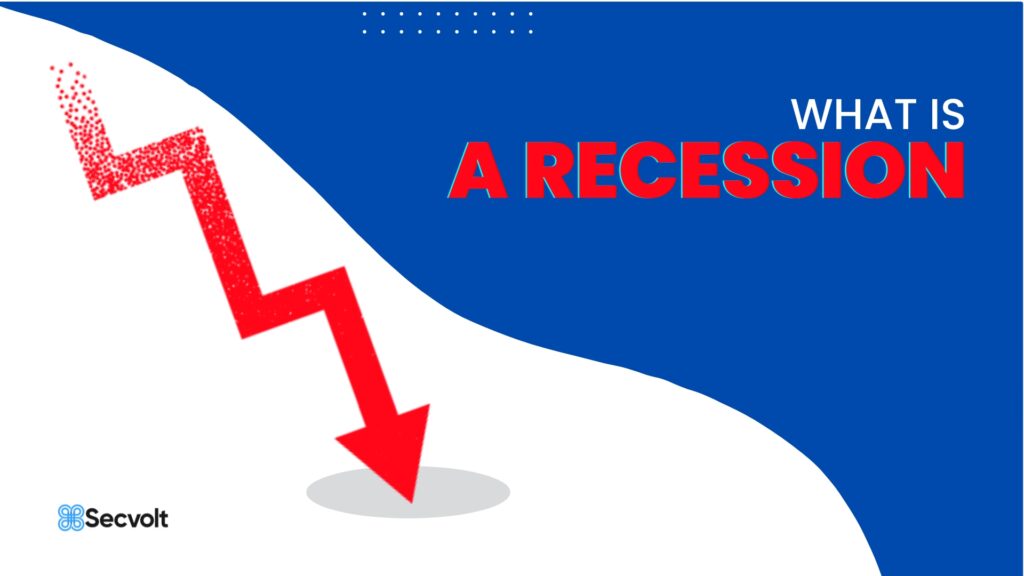
What is a Recession?
A recession is defined as two consecutive quarters of negative GDP growth, which indicates that the economy is contracting rather than expanding. Generally, a recession lasts for at least six months, but no maximum length exists.
What are the chances we are about to enter a recession that could lead to a larger depression? Let’s examine the causes of recession that may help us identify it.
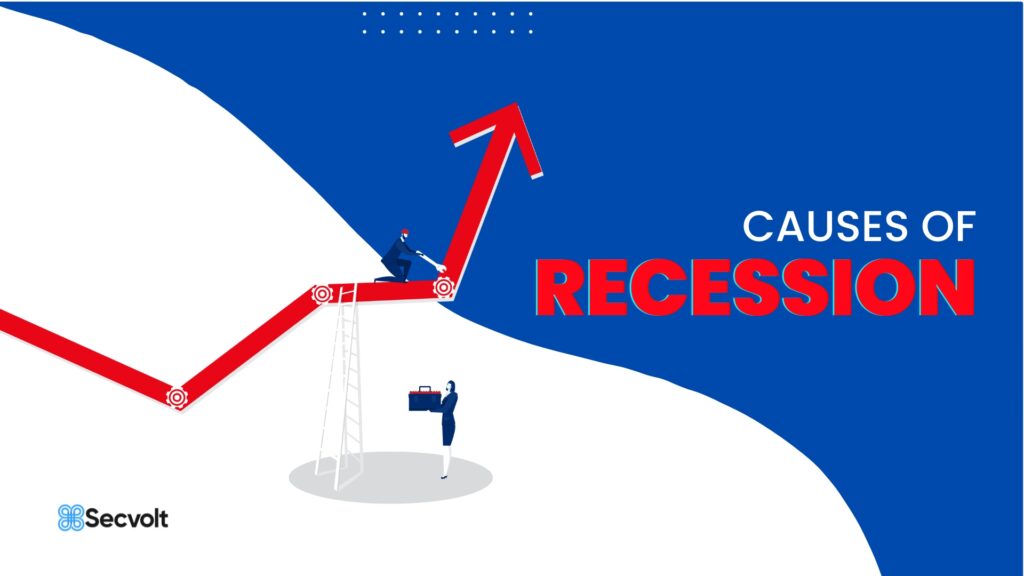
Causes Of Recession
A recession can have various warning signals, such as a declining economy, an inverted yield curve, or a weakening job market. All of these are the results of the causes listed below:
- Overheating Economy: Most recessions emerge as a result of the economy overheating when demand increases faster than supply and extends past full employment. In a typical overheated economy, inflation rises, and unemployment falls below the normal range (historically between 4.6% and 6.3%).
- Economic Bubble: A recession can be caused by the bursting of an asset bubble. The popping of the dot com (.com) bubble caused a recession in 2001, and the housing bubble burst caused a recession in 2007.
- Economic Shocks: It is also possible for an external shock to the economy to cause a recession. In the 1970s and 1980s, oil price shocks drove the country into recession, as did the COVID-19 pandemic in 2020.
- Stock Market Crash: A stock market meltdown might potentially trigger a recession. As the value of stocks falls, investors have fewer funds to invest in firms. If firms are unable to generate funds for expansion and running expenditures, this might result in layoffs or hiring freezes.
So, these are the causes of a recession. Let us next find out how long does a recession generally last?
If you need some ideas about what to read next, here they are:
- How Does Recession Affect Retirees?
- 9 Ways To Grow Your 401k
- The Rich V/s The Great Recession~ Who Wins In The Recession?
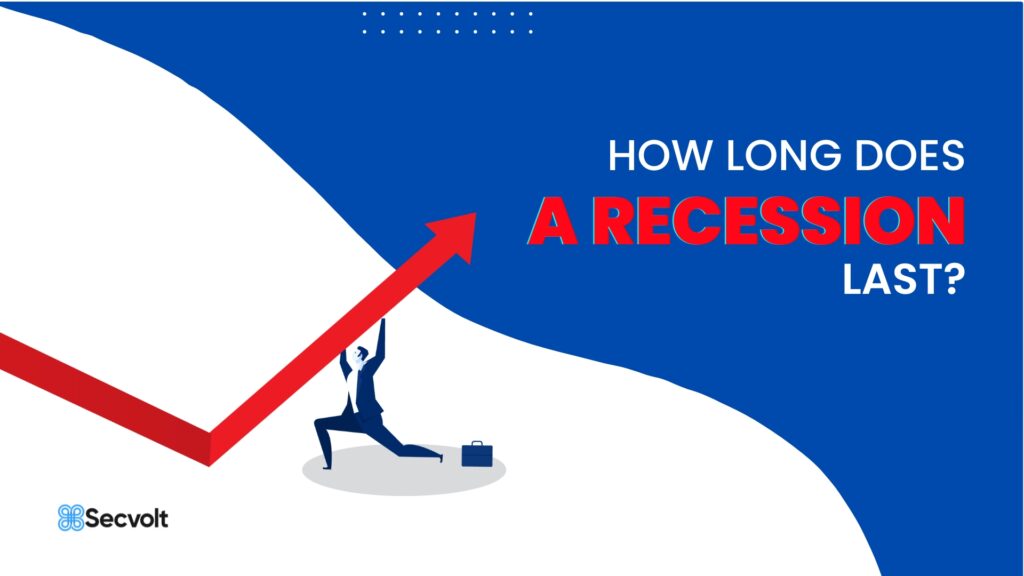
How Long Does A Recession Last?
Since 1854, the average recession has lasted around 17 months. However, recessions have been substantially shorter since World War II, with the average economic slump in the United States lasting around 10 months. They can endure considerably longer, like The Great Recession of 2007-2009 lasted for 18 months. The COVID-19 recession of 2020 only lasted for two months. So, the average length of the recession is around 10 months.
The length of a recession is determined by various factors, including market circumstances, causes, and the economy’s response. For example, the source of financial crises (an asset bubble) prolonged the downturn, but the economy recovered rapidly from the COVID-19 shock since it was in good form prior to the recession. The Federal Reserve Board and Congress also acted quickly to revive the economy.
In addition, recessions tend to last for shorter periods compared to economic expansions. It is possible for a recession to last for a longer or shorter period of time, depending on certain factors. Let us move to the factors that can affect the length of a recession.

Factors That Can Affect The Length Of A Recession
Earlier, we saw that recession is caused by various factors. But there are a few factors that can elongate the recession. Have a look at the following to understand how:
- Severity Of The Recession: The more severe the recession, the longer it is likely to last. For example, the past recession of 2008 lasted for 18 months.
- Cause Of The Recession: Different causes of a recession can lead to different lengths. For example, a recession caused by a credit crisis or a natural disaster may last longer than a recession caused by a temporary decrease in consumer spending.
- Effectiveness Of Government and Central Bank Policies: The policies implemented by the government and central bank, such as the fiscal and monetary policy, can affect the length of a recession. If the policies are effective at stimulating economic growth, the recession may be shorter.
- Economy’s Strength Prior To The Recession: If the economy was strong prior to the recession, it might be better equipped to weather the downturn and recover more quickly.
- International Factors: Global economic conditions can affect the recession length. For example, if the global economy is experiencing a recession at the same time, it may be more difficult for a country to recover from the downturn.
These are just a few examples of the factors that can affect the length of a recession. It is important to note that recessions are a normal part of the business cycle, and the average length of a recession can vary significantly, depending on a variety of factors. But we need to be prepared for them in advance.
In the next segment, we will talk about how we can prepare for the recession.
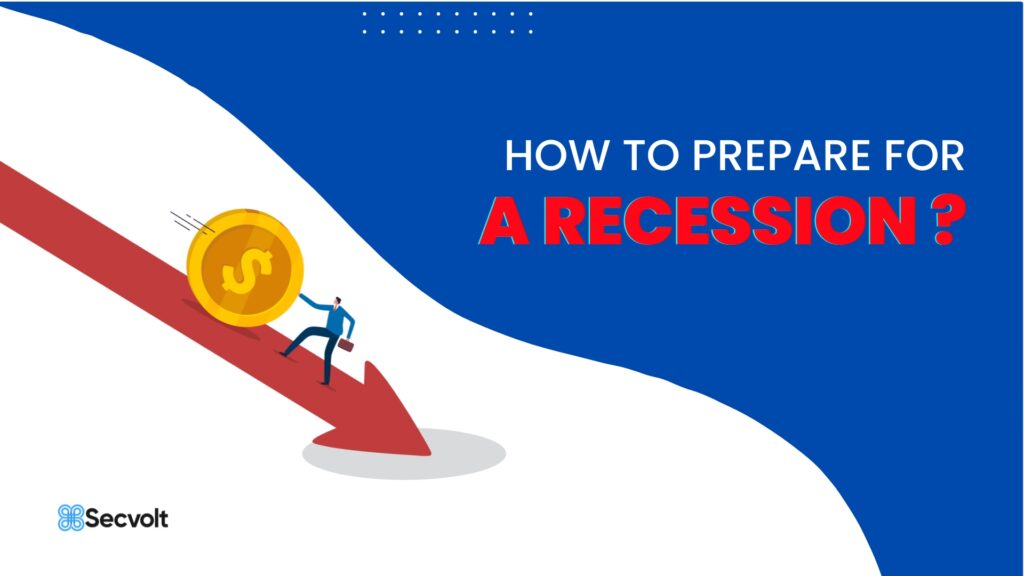
How To Prepare For A Recession?
Here are a few steps you can take to prepare for an economic recession:
- Build An Emergency Fund: Having a financial cushion can help you in facing any unexpected expenses or losses of income during a recession. Aim to save enough to cover your expenses for at least a few months.
- Reduce Debt: Paying down debt, particularly high-interest debt, can help you reduce your financial burden during a recession.
- Diversify Your Investments: Having a diverse investment portfolio can help you manage risk and potentially help to fight against recession, as the hedge fund Secvolt does.
- Look For Ways to Increase Your Income: Consider taking on a side hustle or finding ways to increase your income from your current job.
- Be Strategic About Your Spending: During a recession, it may be necessary to cut back on non-essential expenses and focus on necessities.
These are the steps you can take to reduce the effect of recession on your portfolio & finances. Now, let’s look at the past recessions we have faced and what caused them.
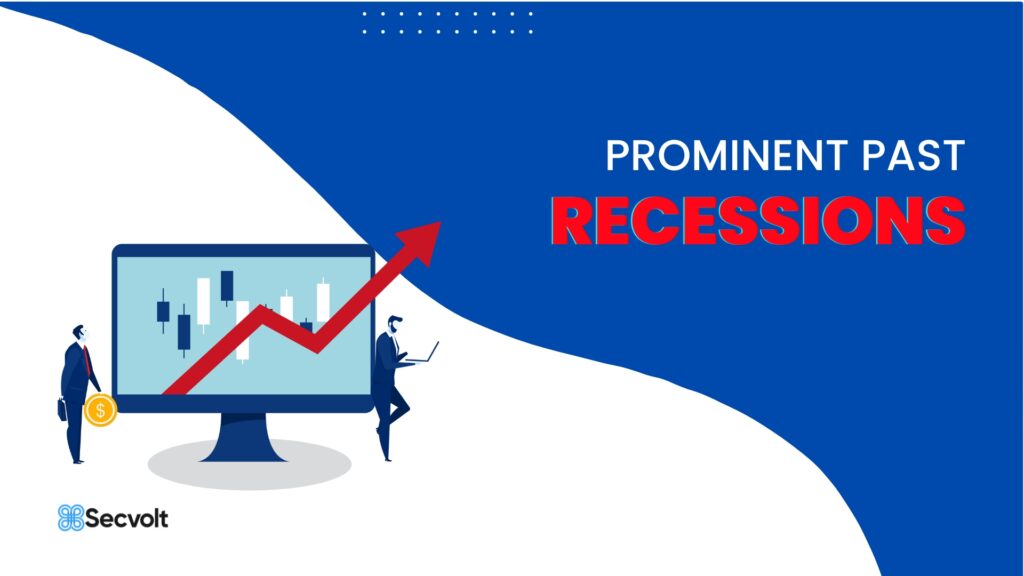
Prominent Past Recessions
We have faced multiple recessions. Every recession has its own story and impacts the economy differently from the other. Let us look at some of the major past recessions we have faced:
- The Great Recession (2007-2009): This was a global financial crisis that was triggered by the collapse of the housing market in the United States. It was the longest and most severe recession since the Great Depression of the 1930s.
- The Dot-com bubble (2000-2001): This recession was caused by the dot-com bubble’s collapse, which was a period of rapid growth in the technology sector followed by a steep decline.
- The Energy Crisis (1973-1975): This recession was caused by a combination of factors, including the Arab oil embargo and the subsequent increase in oil prices, as well as high inflation and unemployment.
- The Great Depression (1929-1939): This was a global economic downturn that was triggered by the stock market crash of 1929 and was the longest and most severe recession in modern history.
- The Recession of 1937-1938: This recession was triggered by a combination of factors, including the end of the New Deal and a decrease in government spending, as well as a decrease in exports and a decline in the stock market.
These are just a few examples of major past recessions.
Recessions are a normal part of the business cycle, and they can be caused by a variety of factors, but if a recession is continuing and becoming a black hole for economic growth, then it might turn into a depression.
In the next section, we will be talking about how a recession can turn into a depression.

When Does A Recession Become a Depression?
It is difficult to determine exactly when a recession turns into a depression, as there is no definition of what constitutes depression and the difference between them.
Depression can be blurry at times. However, there are some general characteristics that are often used to distinguish a recession from a depression.
A recession is typically considered a period of economic downturn characterized by a decline in the gross domestic product (GDP), increased unemployment, and decreased business activity. It is usually considered to be a relatively mild downturn in the economy and is often referred to as a “normal” part of the business cycle.
A depression, on the other hand, is a more intense economic downturn that is characterized by a prolonged and severe decline in economic activity, including a significant drop in GDP, high unemployment, and a decrease in business and consumer spending. Depressions are generally considered to be more severe and longer-lasting than recessions.
In general, a recession is considered to be a relatively short and mild period of economic downturn, while a depression is considered to be a more prolonged and severe economic downturn. However, a long-lasting recession is an indicator of depression.
Be it a recession or depression, or any other economic situation, you need an investment alternative that can help you achieve your financial goals & more. In the last section, let us look at one hedge fund that can help minimize these impacts while delivering extraordinary results.
The Bottom Line
In this article, we discussed recessions and depressions and how long recessions endure. We have seen that a recession may last between 10 and 18 months; if this time period is exceeded to more than 2 years, we might enter a depression. Irrespective of whether the recession lasts long, you must safeguard your portfolio by following the techniques mentioned in the article and choosing alternatives like Secvolt.
With Secvolt, you need not worry because this leading quant hedge fund has an excellent risk management strategy in place to tackle all the market concerns. With its excellent strategies and brilliant proprietary quant systems, it is an alternative that will mitigate the impact of a recession, inflation, or other economic slumps on your portfolio. Secvolt (www.secvolt.com) is a safe haven for all of your investments.





